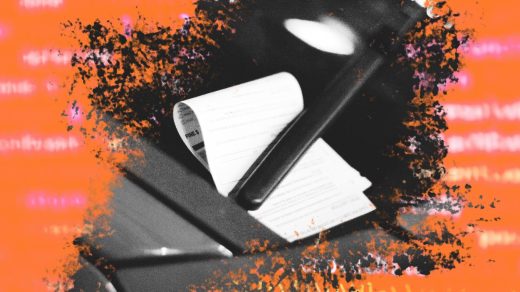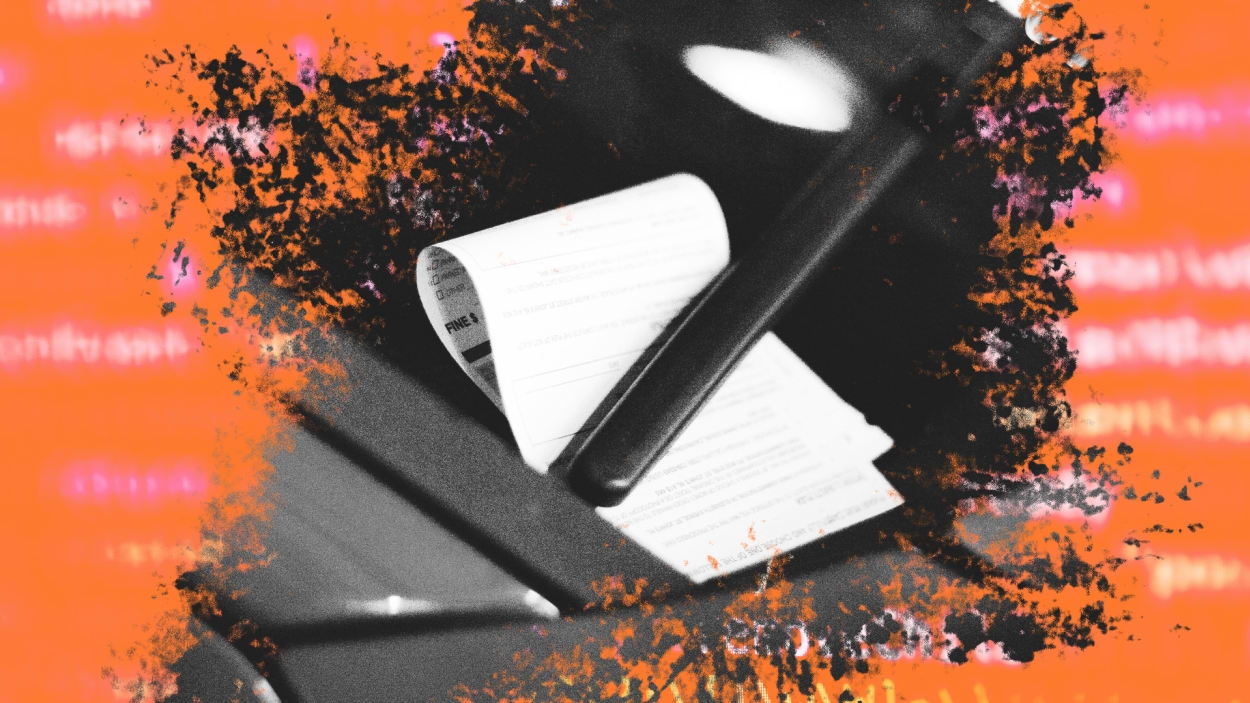I asked ChatGPT to contest my parking ticket. What followed was a thing of beauty
The bright orange envelope tucked under my windshield wiper two weekends ago was a familiar sight: a ticket for $115, for allegedly parking in a crosswalk. I didn’t panic; I’d beaten tickets like this before. But this time, I wondered, could I get the generative AI chatbot ChatGPT to contest the citation for me?
Like most New York City car owners, I park on the street year-round, a notoriously competitive affair. Many of the spots are free as long as you move your car once or twice a week for street cleaning. But parking rules in the nation’s densest city are complex, and subtle mistakes can land you hefty penalties that can sometimes require a skilled lawyer to contest.
My situation this time was a little tricky: I had parked in what would otherwise be considered an “unmarked crosswalk”—that is, an area without painted lines, but between two pedestrian ramps. But because I was at a “T-intersection” with no signs or traffic lights, the area wasn’t actually a crosswalk under New York City law. That was a subtlety that my human traffic cop clearly hadn’t noticed—but something I was hoping to convey to a chatbot.
Testing the chatbot
I started by feeding GPT-4 the city’s legal definition of a crosswalk. “I have noted the definition of a crosswalk according to the NYC parking laws,” the bot replied.
After describing my parking job to the bot, I asked point blank: “Did I park in a crosswalk?”
Within seconds, the answer shimmered onto the screen: “In your case, the roadway ended at the intersection and there were no traffic control devices. Therefore, according to the definition, you did not park in an unmarked crosswalk.”
I repeated the process, testing the bot with a few related pieces of New York City parking law, making sure it understood I hadn’t violated those either. Then, I instructed: “Please write me a legal letter contesting the parking violation based on the information that I told you.”
What followed was a thing of beauty. GPT-4 produced a perfectly formatted letter to a judge that methodically laid out the relevant statutes and why my parking spot should not be considered a crosswalk. It even included a line referencing photo evidence and a respectful sign-off.
All I had to do was fill in my name, add my photos, and upload it to the city’s website. The whole process took about an hour.
On Tuesday, the result arrived via email: “NOT GUILTY.” The judge included a summary of his decision. “This is a persuasive defense,” he wrote. “Respondent submits credible testimony and documentary evidence demonstrating that the vehicle was not in violation . . . Summons dismissed.”
I felt giddy—I’m practically a lawyer now. I wondered, what did real lawyers think? Did we even need them anymore?
Consulting with the humans
First, I shared my ChatGPT transcript with Jon Choi, a lawyer and University of Minnesota professor researching law and artificial intelligence. Choi says my use of ChatGPT to contest a parking ticket mirrors the approach many lawyers are already taking with the tech. “The kind of iteration that you did and providing the sources, that’s exactly what we recommend that lawyers do [when using large language models]. So I think this is a good example of this process working well.”
I wondered how GPT was able to “visualize” my parking spot, and Choi said researchers don’t completely know. One theory is that because GPT-4 has been trained to perform image processing, the model “has an implicit spatial model within its neural network, where it can accurately conceive of and hold in its pseudo-brain, the description of the crosswalk that you provide it,” he says. “It could also be that merely training on text implicitly creates that same spatial model. We’re not exactly sure.”
While large language models have impressive writing abilities, they still have known risks, namely their tendency to “hallucinate” plausible-sounding but inaccurate information, which requires human lawyers to proofread AI outputs, Choi says. The models also struggle with advanced legal reasoning: “I think it would be a mistake to extrapolate [this parking ticket dispute] and then say that murder trials can be conducted using ChatGPT.”
Fine. But could ChatGPT replace a lawyer who fights parking tickets?
I showed the transcript to Larry Berezin, a well-known New York City parking-tickets lawyer who says he’s fought “thousands” of tickets over the past 15 years. Berezin said my results were “superb” compared to the typical amateur letters he sees—something along the lines of, “I’ve driven my whole life, and this is my first parking ticket in 57 years. I didn’t see the sign, it was behind my car! A bus stop? Any bus could’ve gotten into the bus stop.”
Again, Berezin says the bot’s answer is partly a reflection of the prompt. “If someone didn’t ask the right questions, they wouldn’t get that clarity in the response,” he says. “That’s the critical challenge right now dealing with ChatGPT, and you did a terrific job.”
Berezin had a critique, though: My letter was far too wordy. “The judge knows by seeing a T-intersection that the parking space was specifically legal,” he says. “He needed the pictures to believe that you were parked there. You proved you were parked there, you showed him a T-intersection—that took 10 seconds. So all that beautiful writing, the judge didn’t read it,” he said.
Berezin shared with me a successful dispute letter he wrote for the exact same violation just a week earlier. It was stunningly simple—just a few lines long: “I did not park my car in a crosswalk. There wasn’t a crosswalk in front of the place of occurrence, a large building at the corner of a ‘T’ intersection,” the letter read. “Due to these circumstances, please dismiss the parking ticket.”
It wasn’t the letter that won the case, he said, but the visual evidence, like photos of the parking job and a precise, well-labeled street diagram. “Without the evidence, without the exhibits, you’re going to lose.” And no AI can simply conjure those.
What initially felt to me like a technological triumph started to feel a little more underwhelming. AI hadn’t turned me into a lawyer, it simply provided a different route to an end product I’d already envisioned.
“This isn’t a formal brief before the Supreme Court, you’re just stating the case in plain English,” Choi reminded me. “And it sounds like you got smart on the law. You understood why you were not in violation of the law. And you could have actually written the letter yourself.”
(32)



